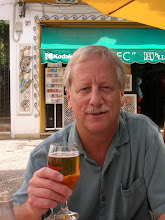As much as I loved the discussion of costs with Atul Gawande on the New England Journal of Medicine site that I posted on Facebook, Ezra Klein asks some very good questions after his discussions with the head of Kaiser Permanente. Why haven't they taken over the market? The short answer is employer-based health care. Before you get too excited by the idea of single payer government health care, consider that Canada spends a greater per cent of GDP on health care. Do they have better care? He also notes that we pay much more for a unit of service than people do in Europe, which doesn't have a Canada-type system. For instance, a CT scan there costs a couple hundred dollars and here it costs over $15,000. Why? Below is the abstract for a paper dealing with this issue, which you can access through Ezra.
ABSTRACT: This paper uses the latest data from the Organization for Economic Cooperation
and Development (OECD) to compare the health systems of the thirty member countries
in 2000. Total health spending—the distribution of public and private health spending
in the OECD countries—is presented and discussed. U.S. public spending as a percentage
of GDP (5.8 percent) is virtually identical to public spending in the United Kingdom, Italy,
and Japan (5.9 percent each) and not much smaller than in Canada (6.5 percent). The paper
also compares pharmaceutical spending, health system capacity, and use of medical
services. The data show that the United States spends more on health care than any other
country. However, on most measures of health services use, the United States is below the
OECD median. These facts suggest that the difference in spending is caused mostly by
higher prices for health care goods and services in the United States.
The Generalist interviews me
1 hour ago




I'm thinking the percentage stated is for public helathcare % of GDP. That doesn't include private insurance and a lot of other catagories.
ReplyDeleteThe latest I've US healthcare costs calculated as a percent GDP is usually about 16%